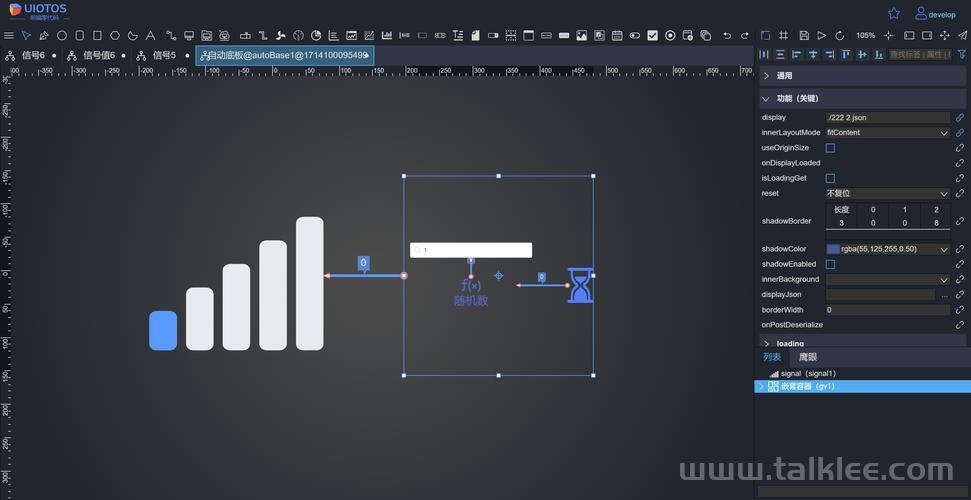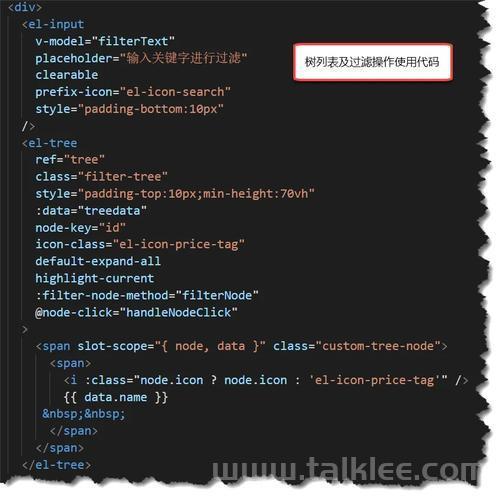前端数据封装
前端数据封装:提升代码复用性与可维护性
在前端开发中,数据封装是实现代码复用、提高可维护性的重要手段。通过合理封装数据,可以隐藏实现细节,提供清晰的接口,同时降低代码的复杂度。本文将详细介绍前端数据封装的概念、方法和实际应用场景,帮助你更好地组织和管理代码。
一、数据封装的概念
数据封装是将数据和操作数据的方法绑定在一起,形成一个独立的模块,并隐藏模块内部的实现细节。外部只能通过模块提供的接口访问和操作数据,而无法直接访问内部数据。
1.1 封装的优点
-
隐藏实现细节:封装可以隐藏数据的内部结构和实现逻辑,降低代码的复杂度。
-
提高代码复用性:封装后的模块可以在多个地方复用,减少重复代码。
-
增强代码可维护性:修改内部实现时,只需调整模块内部,外部调用不受影响。
-
提升性能:通过封装,可以优化数据访问和操作的性能。
1.2 封装的基本原则
-
单一职责:一个模块只负责一个功能,避免功能过于复杂。
-
接口清晰:模块提供的接口应简单明了,便于外部调用。
-
数据隔离:模块内部的数据应对外部不可见,避免直接访问。
二、前端数据封装的方法
2.1 使用对象封装
对象是最基本的封装方式,通过将数据和方法组织到一个对象中,实现简单的封装。
// 封装一个用户对象
const User = {
name: 'John',
age: 25,
email: 'john@example.com',
// 获取用户信息
getInfo() {
return `${this.name}, ${this.age}, ${this.email}`;
},
// 更新用户信息
updateInfo(newName, newAge, newEmail) {
this.name = newName;
this.age = newAge;
this.email = newEmail;
}
};
// 使用封装的用户对象
console.log(User.getInfo()); // "John, 25, john@example.com"
User.updateInfo('Doe', 30, 'doe@example.com');
console.log(User.getInfo()); // "Doe, 30, doe@example.com"
2.2 使用类封装
类是更高级的封装方式,通过定义类来创建多个实例,每个实例都有独立的状态和行为。
// 定义一个用户类
class User {
constructor(name, age, email) {
this.name = name;
this.age = age;
this.email = email;
}
// 获取用户信息
getInfo() {
return `${this.name}, ${this.age}, ${this.email}`;
}
// 更新用户信息
updateInfo(newName, newAge, newEmail) {
this.name = newName;
this.age = newAge;
this.email = newEmail;
}
}
// 创建用户实例
const user1 = new User('John', 25, 'john@example.com');
const user2 = new User('Doe', 30, 'doe@example.com');
// 使用用户实例
console.log(user1.getInfo()); // "John, 25, john@example.com"
user2.updateInfo('Jane', 28, 'jane@example.com');
console.log(user2.getInfo()); // "Jane, 28, jane@example.com"
2.3 使用模块封装
模块是现代前端开发中常用的封装方式,通过将代码组织到模块中,实现代码的分层和模块化。
// 定义一个用户模块
const userModule = (function() {
// 私有数据
let users = [];
// 私有方法
function addUser(name, age, email) {
users.push({ name, age, email });
}
// 公共接口
return {
getAllUsers() {
return users;
},
addUser(name, age, email) {
addUser(name, age, email);
}
};
})();
// 使用用户模块
userModule.addUser('John', 25, 'john@example.com');
userModule.addUser('Doe', 30, 'doe@example.com');
console.log(userModule.getAllUsers());
2.4 使用设计模式封装
设计模式是解决特定问题的通用解决方案,通过设计模式可以实现更复杂的封装。
单例模式
单例模式确保一个类只有一个实例,并提供一个全局访问点。
class Singleton {
constructor() {
if (!Singleton.instance) {
this.data = [];
Singleton.instance = this;
}
return Singleton.instance;
}
addData(item) {
this.data.push(item);
}
getData() {
return this.data;
}
}
// 创建单例实例
const instance1 = new Singleton();
const instance2 = new Singleton();
// 检查是否为同一个实例
console.log(instance1 === instance2); // true
// 使用单例
instance1.addData('Item 1');
console.log(instance2.getData()); // ["Item 1"]
工厂模式
工厂模式通过一个工厂类来创建对象,隐藏对象的创建逻辑。
class User {
constructor(name, age, email) {
this.name = name;
this.age = age;
this.email = email;
}
getInfo() {
return `${this.name}, ${this.age}, ${this.email}`;
}
}
class Admin extends User {
constructor(name, age, email, role) {
super(name, age, email);
this.role = role;
}
getInfo() {
return `${super.getInfo()}, ${this.role}`;
}
}
class UserFactory {
createUser(type, ...args) {
switch (type) {
case 'user':
return new User(...args);
case 'admin':
return new Admin(...args);
default:
throw new Error('Unknown user type');
}
}
}
// 使用工厂模式
const factory = new UserFactory();
const user = factory.createUser('user', 'John', 25, 'john@example.com');
const admin = factory.createUser('admin', 'Doe', 30, 'doe@example.com', 'admin');
console.log(user.getInfo()); // "John, 25, john@example.com"
console.log(admin.getInfo()); // "Doe, 30, doe@example.com, admin"
三、实际应用场景
3.1 数据库操作封装
在前端项目中,可以将数据库操作封装为一个模块,提供统一的接口。
// 数据库操作模块
const dbModule = (function() {
// 模拟数据库
let database = {
users: [
{ id: 1, name: 'John', age: 25 },
{ id: 2, name: 'Doe', age: 30 }
]
};
// 获取所有用户
function getAllUsers() {
return database.users;
}
// 添加用户
function addUser(name, age) {
const newUser = {
id: database.users.length + 1,
name,
age
};
database.users.push(newUser);
return newUser;
}
// 删除用户
function deleteUser(id) {
database.users = database.users.filter(user => user.id !== id);
}
// 公共接口
return {
getAllUsers,
addUser,
deleteUser
};
})();
// 使用数据库模块
console.log(dbModule.getAllUsers());
dbModule.addUser('Jane', 28);
console.log(dbModule.getAllUsers());
dbModule.deleteUser(2);
console.log(dbModule.getAllUsers());
3.2 API 封装
将 API 请求封装为模块,简化调用逻辑。
// API 模块
const apiModule = (function() {
const API_URL = 'https://api.example.com';
// 获取用户数据
async function fetchUsers() {
try {
const response = await fetch(`${API_URL}/users`);
return await response.json();
} catch (error) {
console.error('Error fetching users:', error);
return [];
}
}
// 添加用户
async function addUser(userData) {
try {
const response = await fetch(`${API_URL}/users`, {
method: 'POST',
headers: {
'Content-Type': 'application/json'
},
body: JSON.stringify(userData)
});
return await response.json();
} catch (error) {
console.error('Error adding user:', error);
return null;
}
}
// 公共接口
return {
fetchUsers,
addUser
};
})();
// 使用 API 模块
async function displayUsers() {
const users = await apiModule.fetchUsers();
console.log(users);
}
async function addNewUser() {
const newUser = await apiModule.addUser({ name: 'Jane', age: 28 });
console.log(newUser);
}
displayUsers();
addNewUser();
四、性能优化与注意事项
4.1 性能优化
-
减少封装层次:过多的封装层次会增加性能开销,应尽量保持层次简洁。
-
缓存常用数据:通过缓存减少重复计算和网络请求。
(图片来源网络,侵删) -
避免不必要的封装:对于简单的逻辑,直接实现可能更高效。
4.2 注意事项
-
接口设计:接口应尽量简单,避免过多参数和复杂逻辑。
-
错误处理:封装模块应提供清晰的错误处理机制,便于调试。
-
文档编写:编写详细的文档,说明模块的使用方法和注意事项。
五、总结
前端数据封装是提高代码质量和可维护性的关键。通过对象、类、模块和设计模式等方式,可以有效组织和管理代码,隐藏实现细节,提供清晰的接口。在实际开发中,应根据项目需求选择合适的封装方式,并注意性能优化和错误处理。







